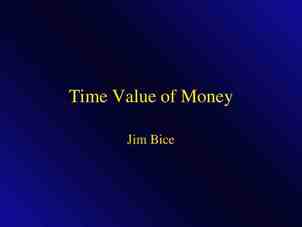Promoting Resilience Lora Peppard, PhD, DNP, PMHNP-BC 1
13 Slides2.91 MB
Promoting Resilience Lora Peppard, PhD, DNP, PMHNP-BC 1
Objectives Define and characterize the concept of resilience. Review evidence-based strategies to promote resilience. Translate evidence-based strategies into actionable items. 2
What is Resilience? Definition Adapting well in the face of trauma, adversity or significant stress Dynamic process of personal negotiation through life Contextual and multidimensional Variable across time and circumstance Involves thoughts, behaviors, and actions that anyone can learn and develop AND any organization or community can PROMOTE 3
Individual Resilience Internal Locus of Control Perseveranc e Emotional Managemen t& Awareness Optimism Perspective Self-Efficacy Sense of Humor Ability to Problem Solve Internal Attributes (Personality/individual characteristics) Environment (External factors such as social support) o What can be drawn and learned from the best to be found in the environment (family, school, 4
10 Ways to Enhance Resilience 1. Make connections. 2. Avoid seeing crises as insurmountable. 3. Accept that change is a part of living. 4. Move toward your goals. 5. Take decisive actions. 6. Look for opportunities for self-discovery. 7. Nurture a positive view of yourself. 8. Keep things in perspective. 9. Maintain a hopeful outlook. 10. Take care of yourself. 5
Resilience Campaign 2020-2021 DO ONE! SHARE ONE! 10 week campaign Platforms: Social media and Email Framework: APA Ways of Enhancing Resilience 6
Evidence-based Strategies & Tools American Psychological Association Positivepsychology.c om 10 Ways of Enhancing Resilience 17 science-based resilience building activities 10-ways-to-build-resilience .pdf (stanford.edu) 23 Resilience Building Tools and Exercises ( Mental To ughness Test) (positivepsyc hology.com) Mindful.org Remodel the brain How to Cultivate th e Resources for Resi lience - Mindful 7
Organizational Resilience ‘A resilient organization effectively aligns its strategy, operations, management systems, governance structure and decision support capabilities so that it can uncover and adjust to continually changing risks, endure disruptions to its primary earnings drivers, and create advantages ’. Focus is different: Individuals Processes Culture (Starr et al 2007) How well can an organization “weather the storm” The greater the diversity of resilience strategies available to an organization, the greater its ability to respond to challenges bigger buffer Risk management provides a good framework to be proactive in managing the unexpected Job design – demands, control, motivators or rewards Organizational culture and structure Leadership – Engaging, supportive styles influence resilience in employees Systemic/external environment – Social and institutional support key at every level, promotion of networks of successful relationships 8
Translation for First Responders Activities need to be: Relatable Digestible Enhanced through organizational support (Relatability Digestibility) Integration Support Likelihood for Successful 9
Growth Mindset & Measuring Individual Resilience Resilience interventions improve psychosocial functioning and facilitate a growth mindset (Robertson et al., 2015; Rendon, 2015) Connor Davidson Resilience Scale (CD-RISC) - measure of personal competence, acceptance of change, secure relationships, and control influences o Recognized as a sound measure of resilience and practical for the workplace due to its speed of completion (Lauridsen, Willert, Eskildsen, & Christiansen, 2017) o CD-RISC: About (cd-risc.com) 10
Measuring Community Resilience A defining characteristic of community resilience is multidimensionality. o The resilience of a community encompasses all of the resources and assets available in the community. Calculating for an Adequate System Tool (CAST) o Produces community-specific assessments of the capacity of the components of a community substance abuse care system along the continuum of care o Generates recommendations by the application of social and community determinants of health as risk coefficients to each estimate of component need o Community leaders can use CAST to prioritize resource allocation more effectively and efficiently(Green et al., 2016) 11
Quote and Image Slide “ Do One. Share One. Build One. 12
Thank you! Lora Peppard, PhD, DNP, PMHNP-BC [email protected] www.hidta.org/adapt 13


















